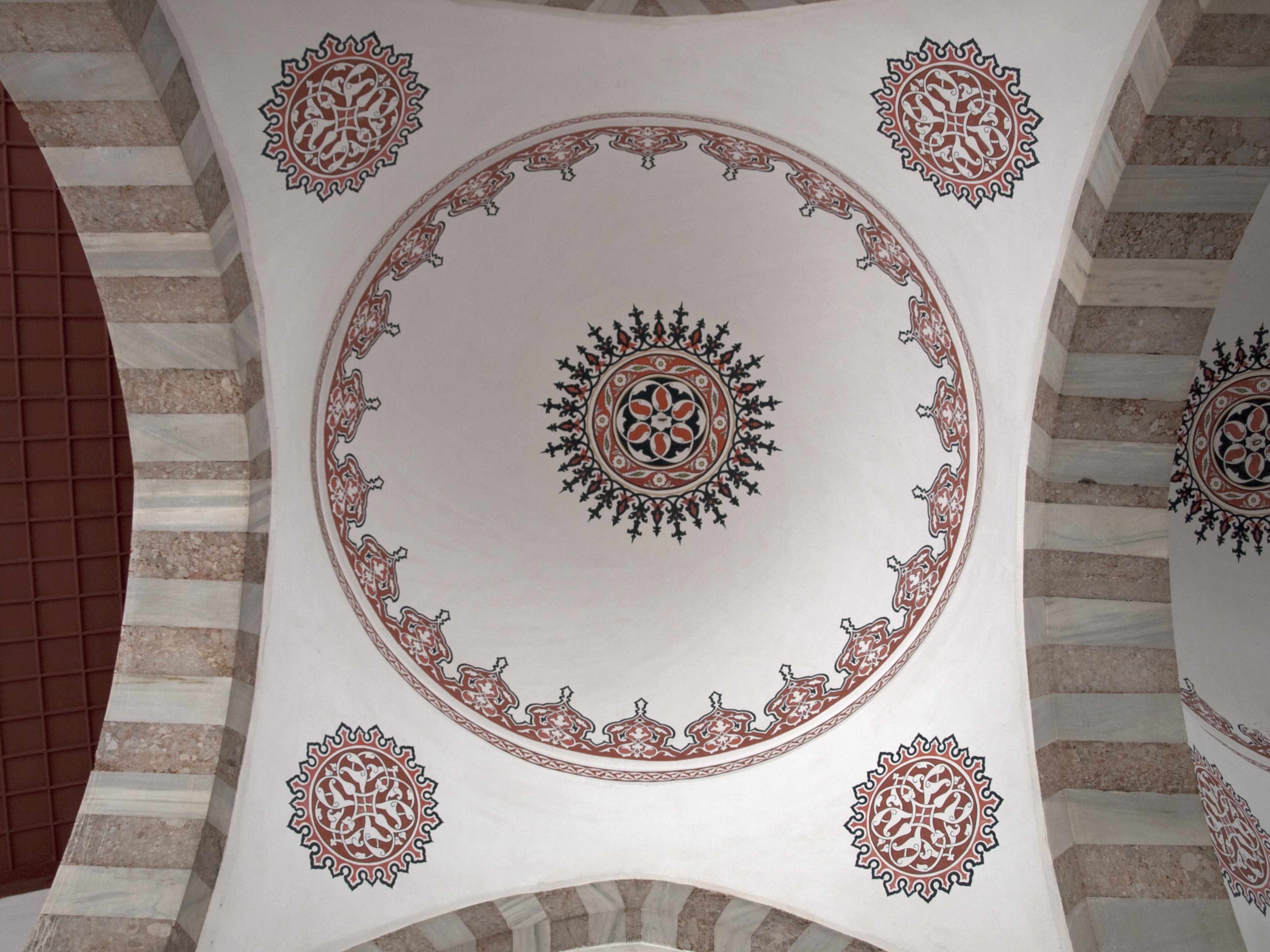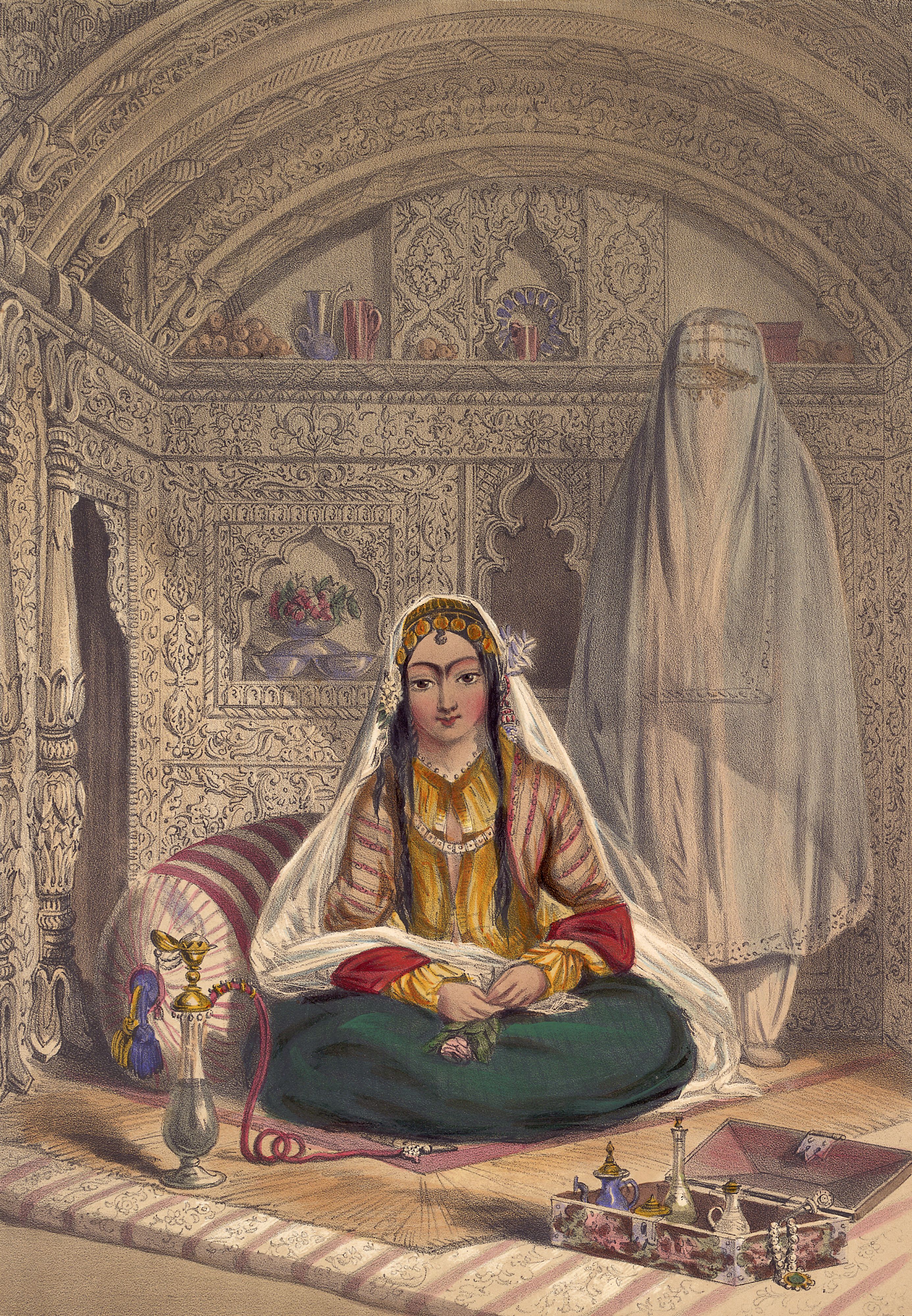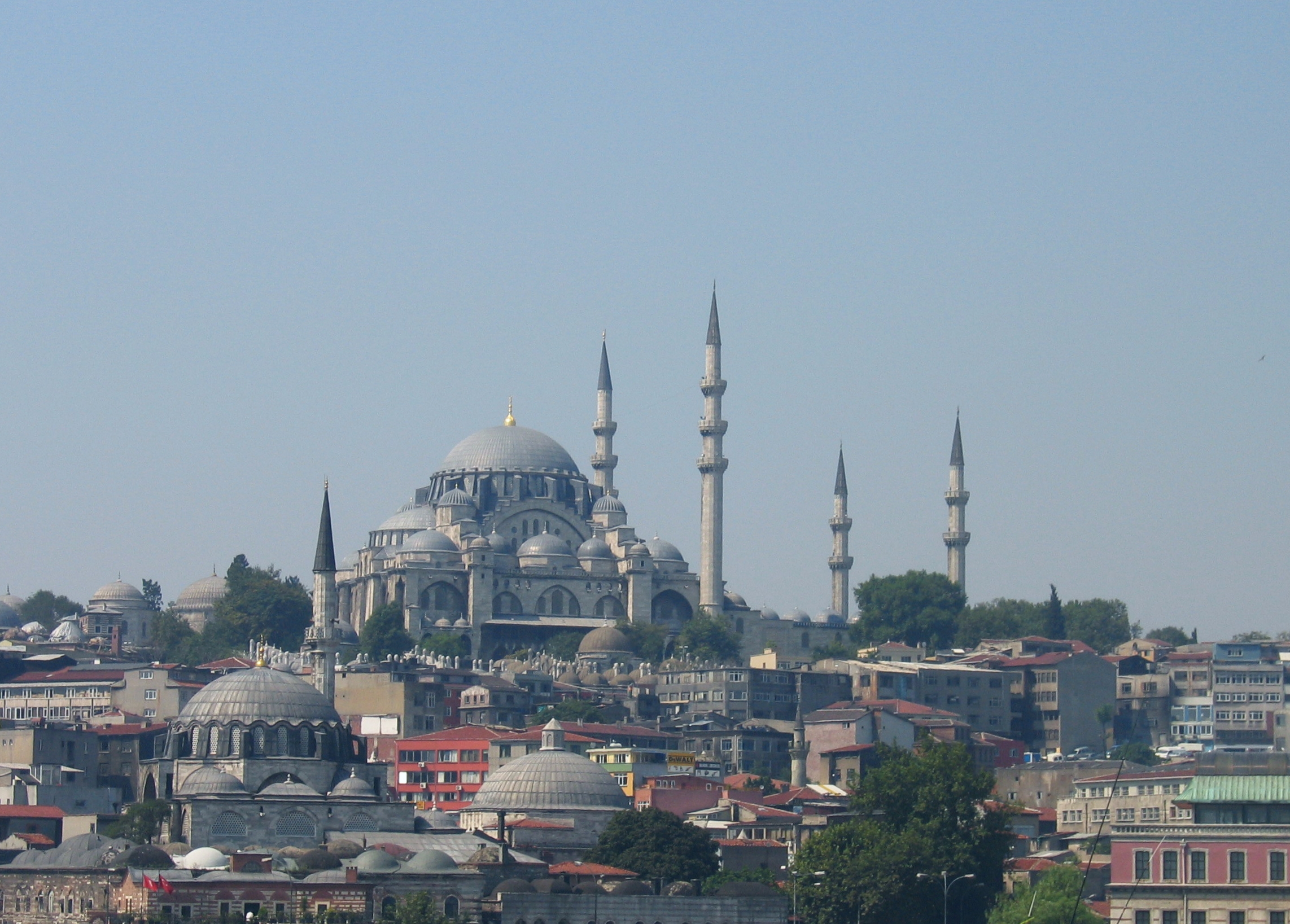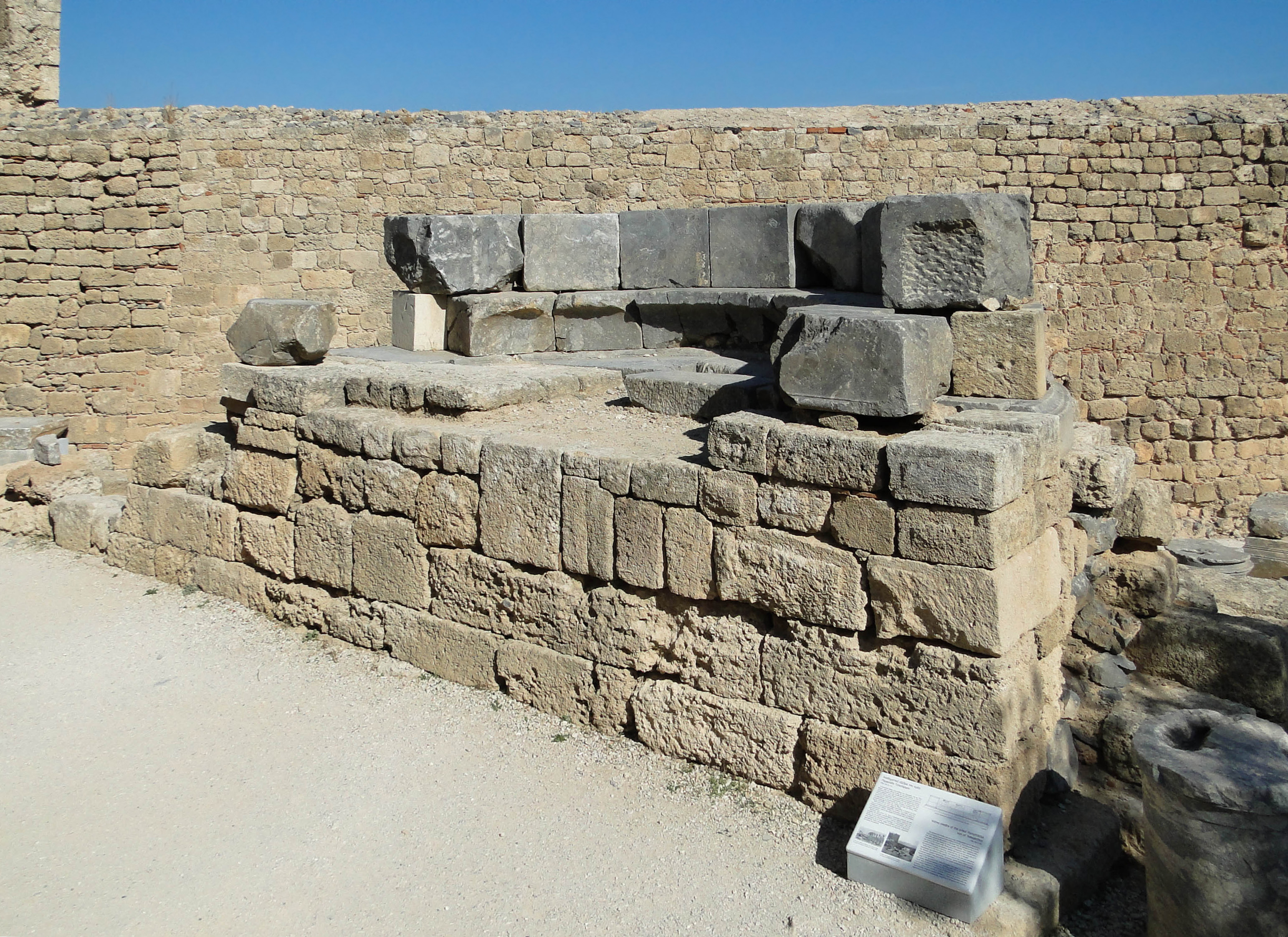|
Atik Valide Mosque
The Atik Valide Mosque ( tr, Atik Valide Camii, Eski Valide Camii) is a 16th century Ottoman imperial mosque located on a hill above the large and densely populated district of Üsküdar, in Istanbul, Turkey. It was built for Nurbanu Sultan, the wife of Sultan Selim II and formed part of a large complex that included a madrasa, guest-rooms and a double caravanseray. The mosque was designed by the imperial architect Mimar Sinan. Planning began in 1571 for a small mosque with a single minaret. The mosque was subsequently expanded and was not completed until 1586, three years after Nurbanu's death. History The Atik Valide Mosque (name translation: ''Old Queen Mother Mosque'') was one of the most extensive mosque complexes in Istanbul area. The mosque was built for Nurbanu Sultan, the Venice, Venetian-born wife of Selim II and the mother of Murad III. She was the first ''valide sultan'' (queen mother) that exercised effective rule over the Ottoman Empire from the harem during the perio ... [...More Info...] [...Related Items...] OR: [Wikipedia] [Google] [Baidu] |
Istanbul
Istanbul ( , ; tr, İstanbul ), formerly known as Constantinople ( grc-gre, Κωνσταντινούπολις; la, Constantinopolis), is the List of largest cities and towns in Turkey, largest city in Turkey, serving as the country's economic, cultural and historic hub. The city straddles the Bosporus strait, lying in both Europe and Asia, and has a population of over 15 million residents, comprising 19% of the population of Turkey. Istanbul is the list of European cities by population within city limits, most populous European city, and the world's List of largest cities, 15th-largest city. The city was founded as Byzantium ( grc-gre, Βυζάντιον, ) in the 7th century BCE by Ancient Greece, Greek settlers from Megara. In 330 CE, the Roman emperor Constantine the Great made it his imperial capital, renaming it first as New Rome ( grc-gre, Νέα Ῥώμη, ; la, Nova Roma) and then as Constantinople () after himself. The city grew in size and influence, eventually becom ... [...More Info...] [...Related Items...] OR: [Wikipedia] [Google] [Baidu] |
Harem
Harem (Persian: حرمسرا ''haramsarā'', ar, حَرِيمٌ ''ḥarīm'', "a sacred inviolable place; harem; female members of the family") refers to domestic spaces that are reserved for the women of the house in a Muslim family. A harem may house a man's wife or wives, their pre-pubescent male children, unmarried daughters, female domestic servants, and other unmarried female relatives. In harems of the past, slave concubines were also housed in the harem. In former times some harems were guarded by eunuchs who were allowed inside. The structure of the harem and the extent of monogamy or polygamy has varied depending on the family's personalities, socio-economic status, and local customs. Similar institutions have been common in other Mediterranean and Middle Eastern civilizations, especially among royal and upper-class families, and the term is sometimes used in other contexts. In traditional Persian residential architecture the women's quarters were known as ''andar ... [...More Info...] [...Related Items...] OR: [Wikipedia] [Google] [Baidu] |
Mimar Sinan Buildings
Traditionally, Iranian architects were known as ''Mi'mars''. The Persian dictionary of ''Mo'in'' defines Mi'mar as: #That who devises the design and plan of a building, and overlooks its construction. #A Banna #That who is responsible for the building, developing, and repairs of a structure or edifice (Emārat). Classical words ''Banna'', ''Mohandes'', ''Ostad'', and ''Amal'' which appear in classical manuals and references of Islamic architecture. Although many scholars do not recognize the Mimar and the Architect to historically be the same, they do agree that their responsibilities overlap extensively. In this list, they are taken to be the same. The list is in chronological order and selectively spans the Islamic age based on available records. There is little, if any, record of the numerous masters of architecture that built some of the early Islamic and pre-Islamic world's wonders of Iran. It is unknown who built the palaces of Bishapur, Firouzabad, Persepolis, Susa, or ... [...More Info...] [...Related Items...] OR: [Wikipedia] [Google] [Baidu] |
List Of Friday Mosques Designed By Mimar Sinan
This is a list of the Friday mosques for which the Ottoman architect Mimar Sinan claimed responsibility in his autobiographies. Of the 77 mosques in the list, 39 are in Istanbul. Background Mimar Sinan was appointed to the post of chief Ottoman architect by the grand vizier Ayas Mehmed Pasha in 1539. Sinan occupied the position until his death in 1588 and served under three sultans: Süleyman I (ruled 1520–66), Selim II (ruled 1566–74) and Murad III (ruled 1574–95). In his autobiography ''Biographical Memoir of Construction'' (''Teẕkiretü’l-bünyān''), Sinan claimed to have designed 698 building including 80 Friday mosques and more than 400 smaller community mosques (''masjids''). In reality he led a team of royal architects and the buildings would have been collective works. Sinan himself would have been occupied with the large building projects undertaken for the sultan. These were the Şehzade Mosque (1543–48), the Süleymaniye Mosque (1548–59), the Kirkç ... [...More Info...] [...Related Items...] OR: [Wikipedia] [Google] [Baidu] |
Madrasa
Madrasa (, also , ; Arabic: مدرسة , pl. , ) is the Arabic word for any type of educational institution, secular or religious (of any religion), whether for elementary instruction or higher learning. The word is variously transliterated ''Madrasah arifah'', ''medresa'', ''madrassa'', ''madraza'', ''medrese'', etc. In countries outside the Arab world, the word usually refers to a specific type of religious school or college for the study of the religion of Islam, though this may not be the only subject studied. In an architectural and historical context, the term generally refers to a particular kind of institution in the historic Muslim world which primarily taught Islamic law and jurisprudence (''fiqh''), as well as other subjects on occasion. The origin of this type of institution is widely credited to Nizam al-Mulk, a vizier under the Seljuks in the 11th century, who was responsible for building the first network of official madrasas in Iran, Mesopotamia, and Khorasan. ... [...More Info...] [...Related Items...] OR: [Wikipedia] [Google] [Baidu] |
Surah
A ''surah'' (; ar, سورة, sūrah, , ), is the equivalent of "chapter" in the Qur'an. There are 114 ''surahs'' in the Quran, each divided into '' ayats'' (verses). The chapters or ''surahs'' are of unequal length; the shortest surah ('' Al-Kawthar'') has only three verses while the longest (''Al-Baqara'') contains 286 verses.Muhammad Mustafa Al-A'zami (2003), ''The History of The Qur'anic Text: From Revelation to Compilation: A Comparative Study with the Old and New Testaments'', p.70. UK Islamic Academy. . Of the 114 chapters in the Quran, 86 are classified as Meccan, while 28 are Medinan. This classification is only approximate in regard to the location of revelation; any chapter revealed after migration of Muhammad to Medina (''Hijrah'') is termed Medinan and any revealed before that event is termed Meccan. The Meccan chapters generally deal with faith and scenes of the Hereafter while the Medinan chapters are more concerned with organizing the social life of the nascent M ... [...More Info...] [...Related Items...] OR: [Wikipedia] [Google] [Baidu] |
Iznik Tiles
Iznik pottery, or Iznik ware, named after the town of İznik in western Anatolia where it was made, is a decorated ceramic that was produced from the last quarter of the 15th century until the end of the 17th century. İznik was an established centre for the production of simple earthenware pottery with an underglaze decoration when, in the last quarter of the 15th century, craftsmen in the town began to manufacture high quality pottery with a fritware body painted with cobalt blue under a colourless transparent lead glaze. The designs combined traditional Ottoman arabesque patterns with Chinese elements. The change was almost certainly a result of active intervention and patronage by the recently established Ottoman court in Istanbul who greatly valued Chinese blue-and-white porcelain. During the 16th century the decoration of the pottery gradually changed in style, becoming looser and more flowing. Additional colours were introduced. Initially turquoise was combined ... [...More Info...] [...Related Items...] OR: [Wikipedia] [Google] [Baidu] |
Portal (architecture)
A portal is an opening in a wall of a building, gate or fortification, especially a grand entrance to an important structure. Doors, metal gates, or portcullis in the opening can be used to control entry or exit. The surface surrounding the opening may be made of simple building materials or decorated with ornamentation. The elements of a portal can include the voussoir, tympanum, an ornamented mullion or ''trumeau'' between doors, and columns with carvings of saints in the westwork of a church. Examples File:Baroque portal in Brescia.jpg, Baroque portal of a private palace in Brescia File:Dülmen, St.-Viktor-Kirche, Eingangsportal -- 2021 -- 4504-10.jpg, Wooden portal of the Church of St. Victor in Dülmen File:Porto - Sant Martí de Cedofeita - Façana principal.JPG, Romanesque portal of the Church of São Martinho de Cedofeita, with nested arches File:Hronsky Benadik-Hlavny portal klastorneho kostola.jpg, Gothic portal of the church in Hronský Beňadik File:FI-Tampere-20 ... [...More Info...] [...Related Items...] OR: [Wikipedia] [Google] [Baidu] |
Exedra
An exedra (plural: exedras or exedrae) is a semicircular architectural recess or platform, sometimes crowned by a semi-dome, and either set into a building's façade or free-standing. The original Greek sense (''ἐξέδρα'', a seat out of doors) was applied to a room that opened onto a stoa, ringed with curved high-backed stone benches, a suitable place for conversation. An exedra may also be expressed by a curved break in a colonnade, perhaps with a semicircular seat. The exedra would typically have an apsidal podium that supported the stone bench. The free-standing (open air) exedra, often supporting bronze portrait sculpture, is a familiar Hellenistic structure, characteristically sited along sacred ways or in open places in sanctuaries, such as at Delos or Epidaurus. Some Hellenistic exedras were built in relation to a city's agora, as in Priene. Monument architects have also used this free-standing style in modern times. Rise The exedra achieved particular populari ... [...More Info...] [...Related Items...] OR: [Wikipedia] [Google] [Baidu] |
Selimiye Mosque, Edirne
The Selimiye Mosque ( tr, Selimiye Camii) is an Ottoman imperial mosque, which is located in the city of Edirne (formerly Adrianople), Turkey. The mosque was commissioned by Sultan Selim II, and was built by the imperial architect Mimar Sinan between 1568 and 1575. It was considered by Sinan to be his masterpiece and is one of the highest achievements of Islamic architecture as a whole and Ottoman architecture in particular. The mosque, together with its ''külliye'', was included on UNESCO's World Heritage List in 2011. History The Selimiye Mosque was built at the peak of Ottoman military and cultural power. As the empire started to grow, the emperor sought to centralize Edirne. Sinan was asked to help to construct the Selimiye Mosque, making the mosque distinctive and serving the purpose of centralizing the city. The mosque was begun in 1568 and completed in 1574 or 1575. Selim II, who commissioned the mosque, died in December 1574, before he was able to see the mosque fully ... [...More Info...] [...Related Items...] OR: [Wikipedia] [Google] [Baidu] |
Edirne
Edirne (, ), formerly known as Adrianople or Hadrianopolis (Greek: Άδριανούπολις), is a city in Turkey, in the northwestern part of the province of Edirne in Eastern Thrace. Situated from the Greek and from the Bulgarian borders, Edirne was the second capital city of the Ottoman Empire from 1369 to 1453, before Constantinople became its capital. The city is a commercial centre for woven textiles, silks, carpets and agricultural products and has a growing tourism industry. In 2019 its estimated population was 185,408. Edirne has an attractive location on the rivers Meriç and Tunca and has managed to withstand some of the unattractive development that mars the outskirts of many Turkish cities. The town is famous in Turkey for its liver. ''Ciğer tava'' (breaded and deep-fried liver) is often served with a side of cacık, a dish of diluted strained yogurt with chopped cucumber. Names and etymology The city was founded and named after the Roman emperor Hadr ... [...More Info...] [...Related Items...] OR: [Wikipedia] [Google] [Baidu] |
Reşwan (tribe)
Reşwan, (; ) also known as Reşiyan, is a Kurdish tribe, native to the western frontier of Kurdistan, mostly populating Adıyaman, Gaziantep, Kahramanmaraş and Malatya provinces in Turkey and also present in Konya and Ankara provinces, Raqqa in Syria, and Qazvin Province in Iran. Members of the tribe mostly adhere to the Hanafi school of Islam but some are Alevi. Etymology Nuh Ateş, a scholar and editor of Bîrnebûn, suggests that the name Reşwan is a compound of the Kurdish words () and the plural form ''-ân''. Stefan Winter argues Reşwan can be understood as "The Blacks" in Kurdish. According to the tax records from the 16th century in the Ottoman Sancak in Urfa, the tribe was referred to as a remnant of the ''Black Nation'' ( tr, Kara Ulus) tribal confederation that was mainly composed of Kurdish tribes affiliated with the Qara Qoyunlu ( black sheep) confederation. Nonetheless, the name of the tribe was written in over fifty different ways in Ottoman documents du ... [...More Info...] [...Related Items...] OR: [Wikipedia] [Google] [Baidu] |







.jpg)
